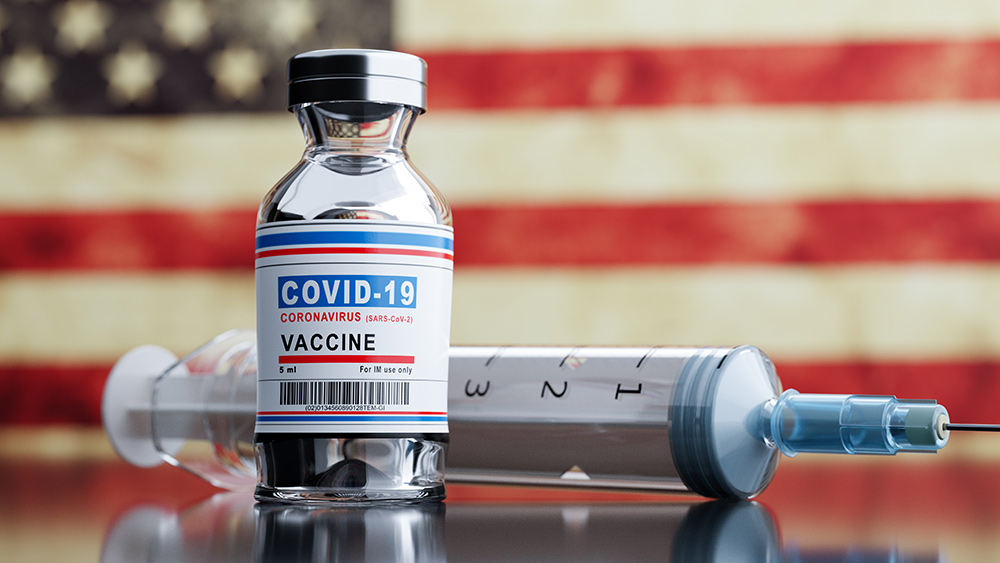Educating the public about how drugs are prescribed can help prevent overprescription and antibiotic resistance, advise researchers
04/10/2019 / By Lance D Johanson

Primary care physicians routinely over-prescribe antibiotics and contribute to the problem of antibiotic resistance. According to a 2016 report from the National Health Service, antibiotic resistance is “one of the most significant threats to patient safety worldwide.”
A study published in the Journal of Antimicrobial Chemotherapy presents a simple solution to this growing crisis: educating the public about prescription practices. When patients are educated on the reasons why doctors prescribe drugs, and how they go about it, prescription rates fall, reducing health problems associated with over-prescription. In preliminary studies, researchers have identified that 23 percent of antibiotic prescriptions are inappropriate. When antibiotics are unnecessarily consumed, the drugs become ineffective for treating future infections.
Education strategy lowers prescription rates by 14 percent
To arrive at their conclusion, the researchers analyzed England’s prescribing data between 2013 – 2018. An anti-microbial resistance strategy was put in place by the Chief Medical Officer for England to help doctors understand prescribing data by practice and by month to prevent needless prescriptions that lead to superbug infections. The researchers accessed annual prescription data from 1998 to 2016 and monthly prescribing data from October 2010 to June 2018 to determine if there was a measurable impact from the anti-microbial resistance strategy put in place in 2013.
For several years prior to the education initiative, antibiotic prescriptions remained high, but when 2013 came around, prescription rates dropped off steadily. Between 2012 and 2017, antibiotic prescription rates fell by 14 percent. The drop in prescriptions occurred because the public and the doctors became aware of antibiotic resistance. The drop in prescriptions occurred even as the population increased in size. The anti-microbial resistance education strategy got in the doctors’ heads and made them less willing to prescribe needless antibiotics. In all, since the strategy was implemented, there were 9.7 million fewer prescriptions than would’ve been expected according to pre-2013 trends.
Same education strategy needed to combat viral resistance caused by coercive vaccine programs
This same education strategy could be employed to help patients and doctors understand how and when vaccines are unnecessarily administered. As seen with antibiotic-resistance, scientists are beginning to identify greater incidence of viral resistance, including viral mutations and viral shedding because of poorly-designed vaccine programs. Currently, U.S. pediatricians receive a $400 bonus from Blue Cross Blue Shield for fully vaccinating a child under two years of age. In order to receive all the bonuses, a pediatrician must fully vaccinate at least 63 percent of the children. Because of this coercive policy, administration of vaccinations is not about doing what’s best for the individual child. It’s about compliance. By fully vaccinating 100 patients, a pediatrician receives a $40,000 bonus. This helps explain why many pediatricians won’t accept patients who don’t vaccinate, causing discrimination and segregation in medicine. A coercive, strings-attached policy such as this only perpetuates the problems with vaccines.
By educating patients and doctors about viral mutations, viral shedding, and toxic burden, many children could be saved from vaccine damage. In fact, a 2013 study found that mortality rates from vaccines increase when live and inactivated vaccines are co-administered. The study found that when pentavalent vaccines or DTP vaccines are co-administered with measles vaccines and yellow fever vaccines, mortality rates jumped.
With an appropriate public education on vaccine risks, patients can better decide what they want to augment their child’s immune system with, preventing over-vaccination, increased toxic burdens, and potential reactions such as febrile seizures and encephalitis. According to Danish researchers, small variations in genes can help predict whether a vaccine causes febrile seizures in children. Sadly, social media sites are regulating and banning important public health information on vaccines, preventing improvements in immunology, while putting children’s health at risk.
Sources include:
Submit a correction >>
Tagged Under:
antibiotic resistance, Censorship, coercion, genetic testing, health freedom, needless vaccines, over-prescription, prescription practices, public education, superbug infections, superbugs, toxic burden, Tyranny, vaccination practices, vaccine damage, vaccine incentives, viral mutations, viral shedding
This article may contain statements that reflect the opinion of the author
RECENT NEWS & ARTICLES
Vaccines.News is a fact-based public education website published by Vaccines News Features, LLC.
All content copyright © 2018 by Vaccines News Features, LLC.
Contact Us with Tips or Corrections
All trademarks, registered trademarks and servicemarks mentioned on this site are the property of their respective owners.





















